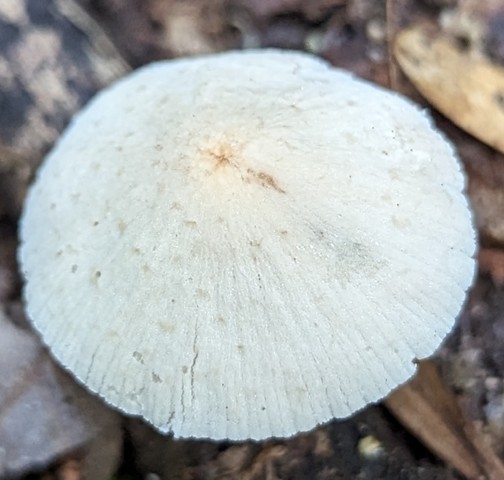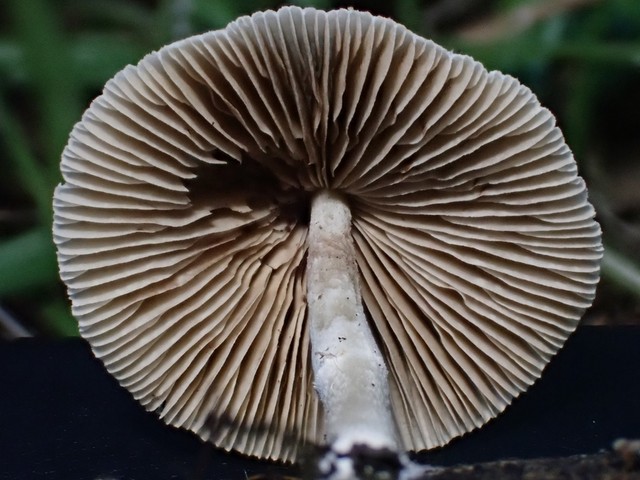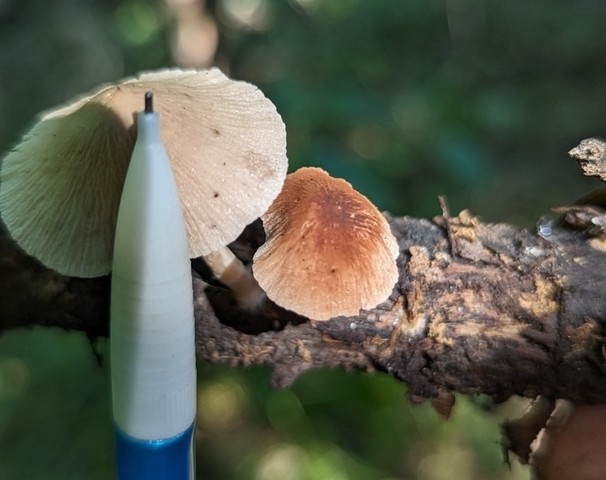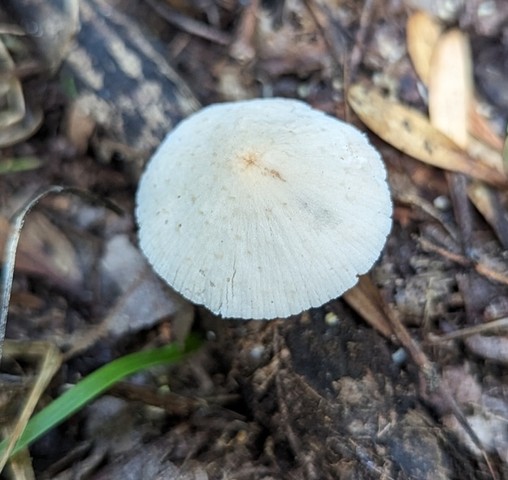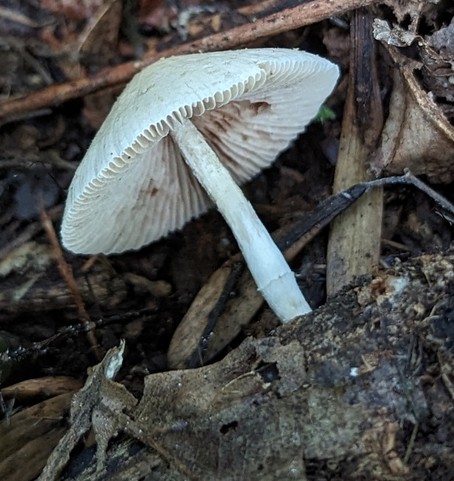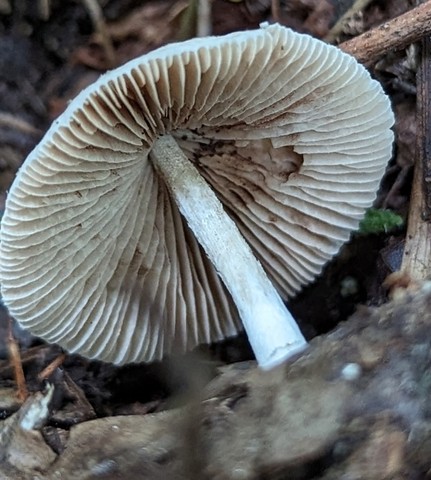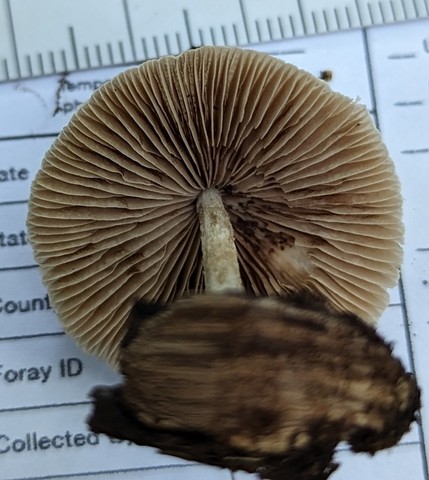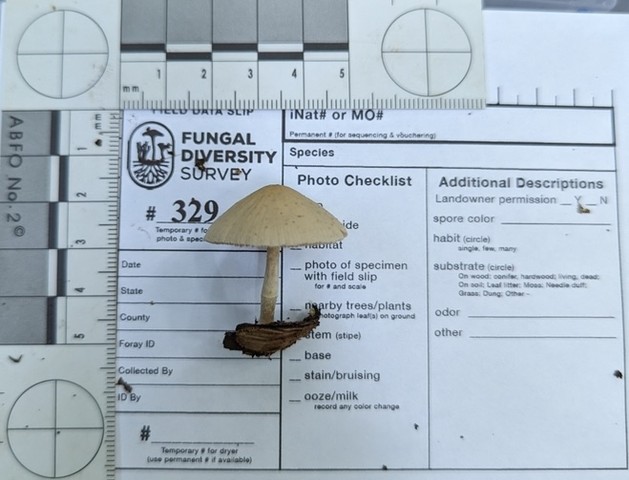Pale Yellow Brittlestem
Candolleomyces luteopallidus
Life > Fungi > Basidiomycota > Agaricomycotina > Agaricomycetes > Agaricomycetidae > Agaricales > Agaricineae > Psathyrellaceae > Candolleomyces
Description
Candolleomyces luteopallidus is a decomposer that can be found from late spring through fall in eastern Nebraska. It grows on rich soil, humus, or decaying wood, often in disturbed areas such as trailsides or forest edges. The species name luteopallidus refers to its pale yellow coloring — luteo meaning “yellow” and pallidus meaning “pale”.
The cap is pale yellow to cream-colored when fresh, often becoming lighter or slightly faded with age. It starts out bell-shaped and becomes broadly evenly rounded or nearly flat as it matures. The gills are slightly attached to the stem (adnexed), gray to cream when young turning dark brown to nearly black with age. The stem is thin, white, fragile, and with an annular zone at the top. The spore print is brown.
Observations
August 17th, 2023 Indian Cave State Park

#329
- Growing on halfway submerged hardwood stick in low moist riparian woodland area.
- Cap white with a golden center, broadly conical, with a finely striated/pleated margin.
- Gills mottled white on cream, adnexed, and partial gills frequent.
- Stipe white, with an annular zone and white basal mycelium.
Additional Info
- Spore Print: brown
AAGTCGTAACAAGGTTTCCGTAGGTGAACCTGCGGAAGGATCATTAACGAATATCTATGGCGTTGGTTGTAGCTGGCTCCTAGGAGCATTTGTGCACGCCCGTCATTCATATCATCTTTCCACCTGTGAACTATGTGTAGATCTGGATATCCCTCGCTTTGTTAACAAAGCGGATGCAAGGATTGCTGCGTCGAAAAGGCCGGCTCTCTTTGAATTTCCAGGTCTATGTCTTTTTACACACCCCATTCGAATGATGTAGAATGTAGTCAATGGGCCTTCAAGCCTATAAAACACTATACAACTTTCAGCAACGGATCTCTTGGCTCTCGCATCGATGAAGAACGCAGCGAAATGCGATAAGTAATGTGAATTGCAGAATTCAGTGAATCATCGAATCTTTGAACGCACCTTGCGCTCCTTGGTATTCCGAGGAGCATGCCTGTTTGAGTGTCATTAAATTCTCAACCTCACCAGTTTTGTAATGAAACGGTGAAGGCTTGGATGTGGGGGTCTTTGCAGGCTGCCTTAGTGCTGGTCTGCTCCCCCGAAATGCATTAGCGAGCTCATATCGAGCTTCCGTCTATTGGTGAGATAATTATCTACGCCGTGGATTTGGACTCGTGCTTGCTTCTAACCGTCCGCAAGGACAATTTACTTGACCAATTTGACCTCAAATCAGGTAGGACTACCCGCTGAACTTAAGView MycoMap DNA Results
References
Wächter, D., & Melzer, A. (2020). Proposal of a new classification system for the family Psathyrellaceae based on phylogenetic analysis and morphological data. Mycological Progress, 19, 1151–1265. https://doi.org/10.1007/s11557-020-01606-3
Created December 15, 2025 at 10:41 AM
